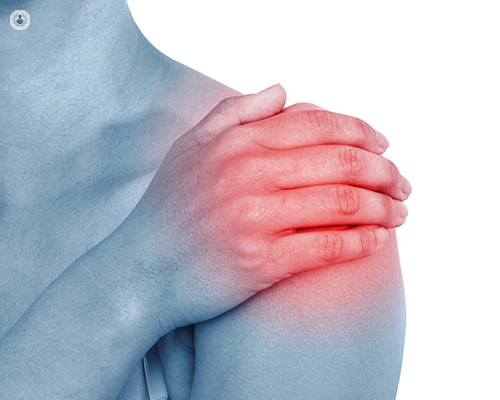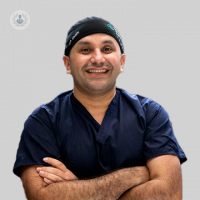FAQs about rotator cuff tears
Written in association with:In this article below, highly esteemed consultant orthopaedic surgeon, Professor Mohamed Imam, shares expert insights with regards to rotator cuff tears.

What causes rotator cuff tears and how does it impact vulnerability?
Several factors can cause rotator cuff tears, each affecting the vulnerability of the shoulder in different ways. These include:
- Natural ageing
- Repetitive use
- Acute trauma
- Genetic factors
- Lifestyle
What are the symptoms of rotator cuff tears, and why is early detection critical?
Rotator cuff tears can present a range of symptoms that can significantly affect daily activities. The main reported symptoms include pain, weakness, limited range of motion, crepitus, and muscle atrophy.
What are the most effective treatments for rotator cuff tears, and how can individuals choose the right option for their needs?
Treatment options for rotator cuff tears vary based on the severity of the tear and individual needs:
Non-invasive approaches:
- Physiotherapy: A structured program designed to strengthen shoulder muscles, improve range of motion, and alleviate pain.
- Pain management: Over-the-counter medications like NSAIDs to reduce pain and inflammation. In some cases, corticosteroid injections are used for their potent anti-inflammatory effects. We generally aim to avoid using steroids as they can have adverse effects on the torn tendons.
- Rest and activity modification: Avoid activities that aggravate symptoms and allow the shoulder to rest to promote healing.
Surgical solutions:
- Arthroscopic repair: A minimally invasive (keyhole) procedure using small incisions and an arthroscope to repair the torn tendon. This method often results in faster recovery and less postoperative pain. During arthroscopy, your surgeon inserts a small camera, called an arthroscope, into your shoulder joint. The camera displays a live video feed on a monitor, and your surgeon uses these images to guide miniature surgical instruments. Because the arthroscope and surgical instruments are small and thin, your surgeon can use very small incisions (portals), rather than the larger incision needed for standard, open surgery.
- Open repair: A larger incision is made to access and repair the damaged tendon for extensive tears. Open repairs are less commonly utilised nowadays because of the advances of arthroscopic techniques.
- Tendon transfer: When the rotator cuff tendon is irreparable, a healthy tendon from another body part may replace the damaged one. There are many options available, and this procedure is commonly used nowadays.
How can individuals best manage symptoms and enhance function after a rotator cuff tear?
If you have a rotator cuff tear and keep using it despite increasing pain, you may cause further damage. A rotator cuff tear can get larger over time. Chronic shoulder and arm pain are good reasons to see your surgeon. Early treatment can prevent your symptoms from getting worse and help you get back to your normal routine quicker. The goal of any treatment is to reduce pain and restore function. There are several treatment options for a rotator cuff tear; the best option is different for everyone.
Your surgeon may recommend surgery if your pain does not improve with nonsurgical methods. Continued pain is the main indication for surgery. However, your doctor may also suggest surgery if you are active and/or use your arms for overhead work or sports.
Other signs that surgery may be a good option for you include:
- Your symptoms have lasted six to 12 months
- You have a large tear (more than 3 cm), and the quality of the surrounding tissue is good
- You have significant weakness and loss of function in your shoulder
- A recent acute injury caused your tear
Surgery to repair a torn rotator cuff most often involves re-attaching the tendon to the head of the humerus (upper arm bone). There are a few options for repairing rotator cuff tears. Your orthopaedic surgeon will discuss the best procedure to meet your health needs.
Most patients report improved shoulder strength and less pain after surgery for a torn rotator cuff. Each surgical repair technique (open, mini-open, and arthroscopic) produces similar results in terms of pain relief, improvement in strength and function, and patient satisfaction. Surgeon expertise is more important than the choice of technique in achieving satisfactory results.
If you wish to see Professor Mohamed Imam for an appointment today, simply head on over to his Top Doctors profile.


